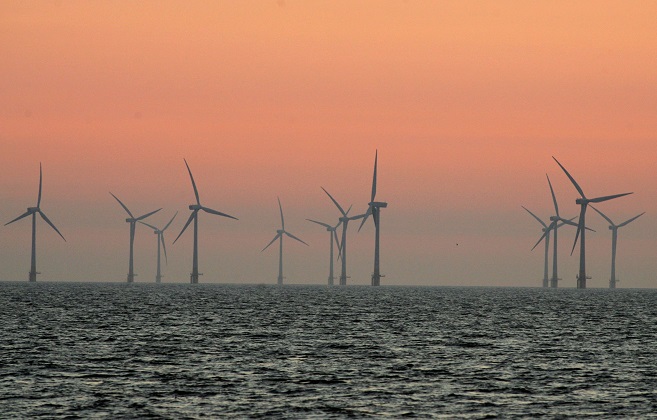The nature of offshore wind energy generation means companies operating in that sector face unique challenges. However, offshore wind also enjoys some advantages that aren’t enjoyed by the onshore segment of the wind industry. A panel of leading experts gathered at the American Wind Energy Association’s O&M and Safety Conference in San Diego on Thursday to discuss recent trends in the offshore wind O&M sector.
Offshore turbines have offshore challenges
Two unique challenges operations and maintenance professionals in offshore wind face are related to weather and access. Ocean storms and significant waves can limit the windows of time O&M professionals can access a turbine. Everyone knows accessing an offshore wind turbine isn’t as simple as driving up to it in a truck, but not just any boat will do. Michael Hughes, Offshore Service Americas for Siemens Gamesa, walked the audience through the various types of vessels that are certified to transfer crews in different size waves.
Because of the impact weather can play in O&M scheduling, the industry places a higher priority on asset monitoring sensors. Matthias Brandt, a board member at Deutsche Windtechnik, explained that with logistics accounting for as much as 70% of maintenance costs, companies can’t afford to move people and equipment when it isn’t necessary.
Siemens Gamesa’s Hughes said companies’ annual service campaigns in the summer because that is when the weather allows more 6-hour service windows. Hughes added that offshore turbines also average more O&M techs per turbine than onshore because more work needs to be done in shorter periods of time.
The benefits of being remote
But offshore wind isn’t all about additional challenges for O&M professionals – there are also some advantages. John O’Keefe, Director of Marine Affairs for Orsted US Offshore Wind, said the relatively remote location of wind turbines means companies can be bolder with their designs and create turbines with bigger “bones” without having to worry as much about surrounding infrastructure. And as the offshore sector continues to grow, O’Keefe says more cities and states will benefit because more ports will be needed for the construction and O&M of wind farms.
Enhanced cooperation within the industry
All of the unique aspects of offshore wind, companies that otherwise compete on multiple fronts have begun cooperating in an effort to offset offshore wind costs. According to Brandt, the bundling of projects, where firms operating wind farms in close proximity to one another share boats, port facilities and other logistical assets, is becoming more popular as firms look to reduce costs.
When comapnies collaborate, good things generally happen. Through the shared experience of bundled offshore wind O&M programs, leaders in the energy sector might be able to drive innovation that advances the industry for decades.
